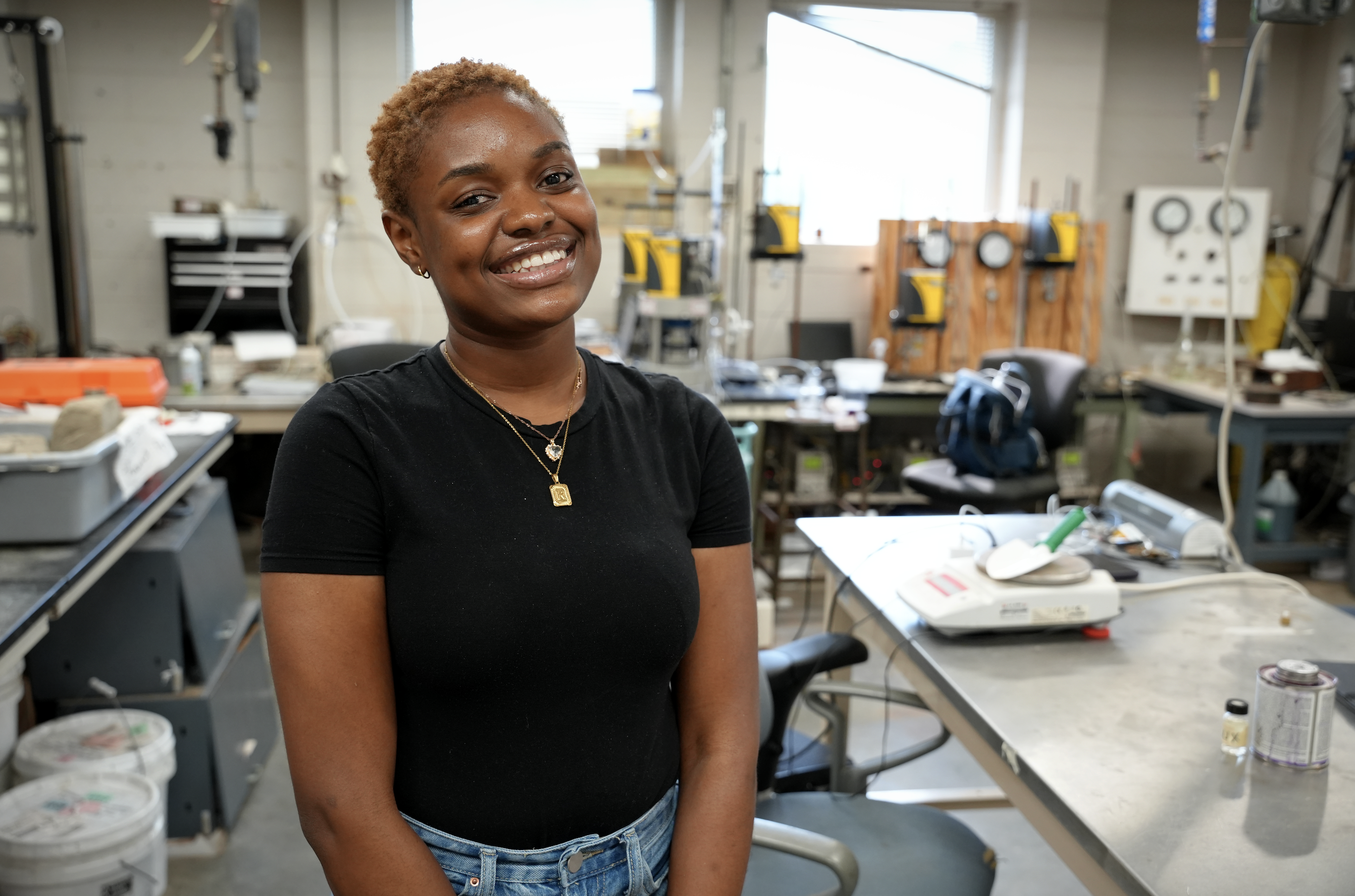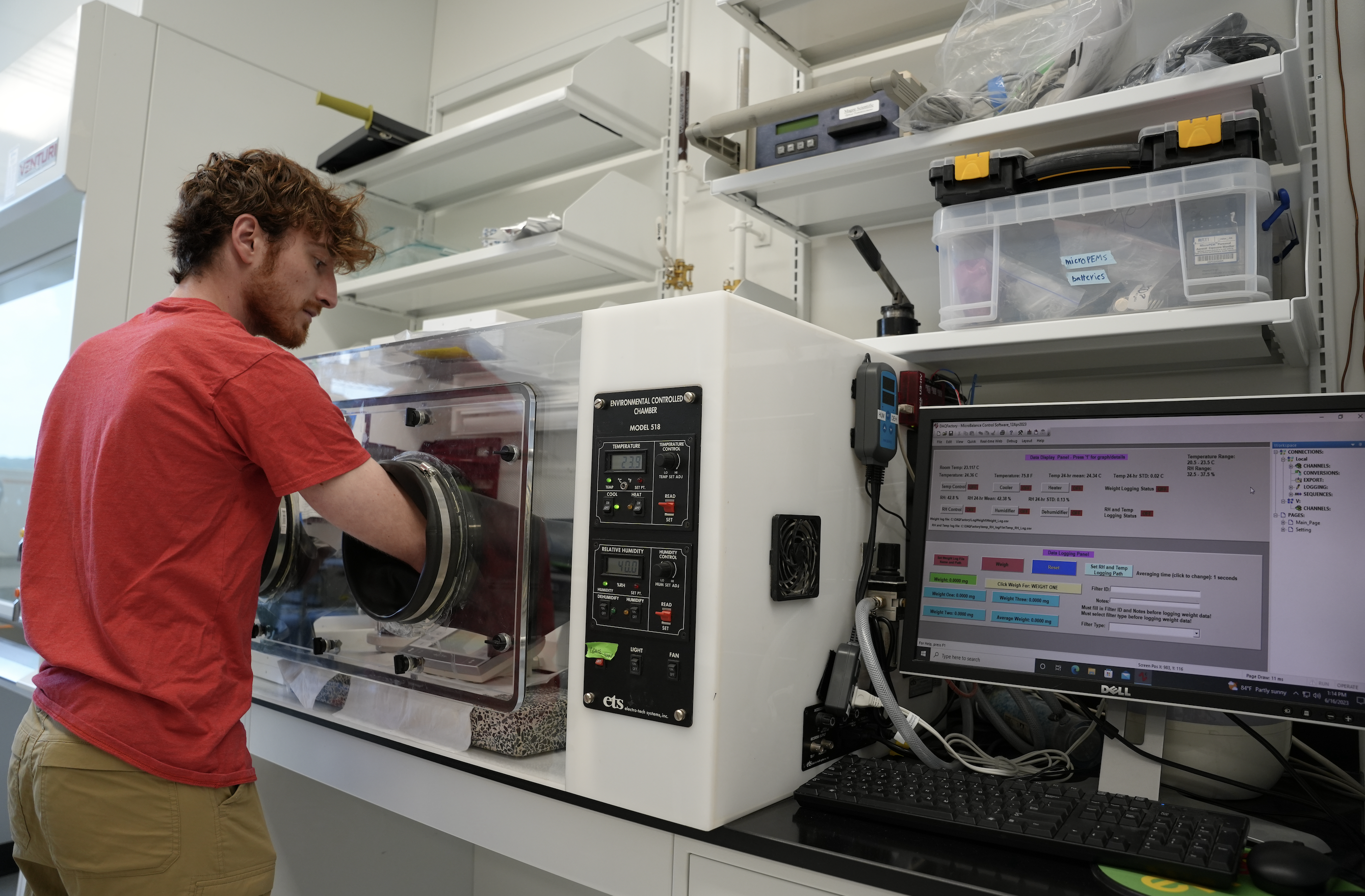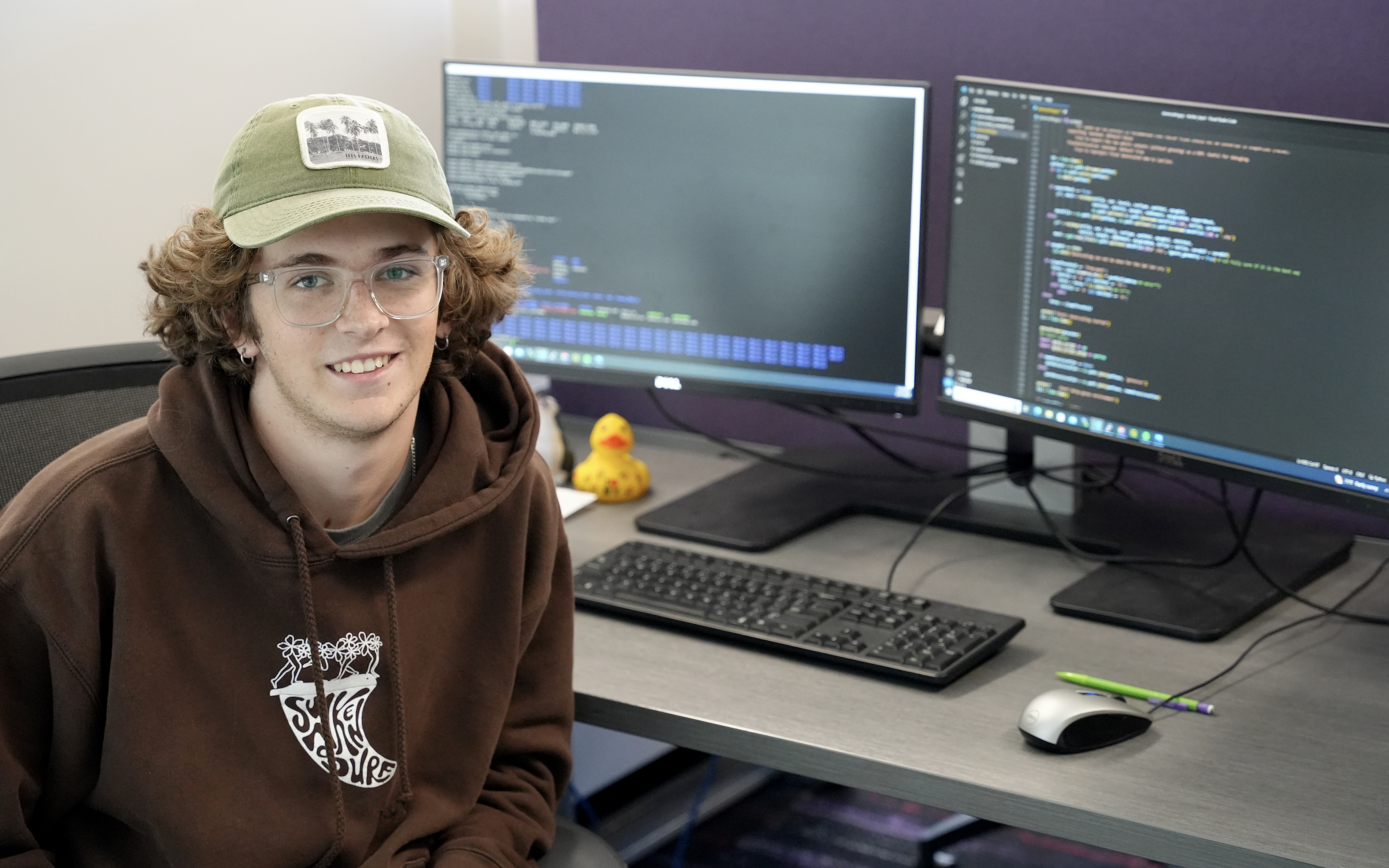For some CCEE undergraduate students, summer break is the perfect time to explore doctoral programs firsthand through the department’s Research Internship Summer Experience (RISE) program.
As part of the program, which was initiated in 2015 by Director of Graduate Programs and Professor Ranji Ranjithan, 16 CCEE participants were paired with research mentors including faculty, graduate students and post-doctoral researchers. Students also participated in weekly sessions on research and professional development and bonded through social activities organized by graduate students.
At the end of the eight-week program, RISE students presented their research findings at the annual NC State Undergraduate Research and Creativity Summer Symposium. Here’s a look at the research students engaged in this summer through RISE.

Rhodenischelah Limage, an environmental engineering student at Bucknell University, spent her summer on NC State’s campus working alongside CCEE Ph.D. candidate Nancy Ingabire Abayo and Professor Brina Montoya. Limage assisted with a laboratory testing program to assess the effect of the angle of inclination of soil deposits’ shear strength under undrained loading conditions. This was to mimic how natural fluvial deposits, which are inclined, behave under dynamic loading such as earthquakes and indirectly assess the liquefaction susceptibility such as the potential for sand that is saturated, behaving as a liquid from strong shaking. The findings from this work contribute to the understanding of liquefaction-induced deformations such as lateral spreading.
“One of my major interests in environmental engineering is climate change and human impacts of building things and new incoming infrastructure,” Limage said. “How can we make sure it’s not negatively impacting the environment? This research sort of goes hand-in-hand with that because the infrastructure that is being built in certain areas is being broken down by things like earthquakes. So how can we better build these buildings to ensure they withstand deformations? It’s given me possible insight on what I can do.”

Jon Pallotto, an environmental engineering student mentored by Professor Andrew Grieshop and graduate student Stephanie Parsons, helped evaluate inexpensive air-sensors for an exposure assessment study in the Chitwan Valley in Nepal. Air pollution exposures pose the greatest health risk to global communities, with the majority of air-related maladies associated with exposure to particles smaller than 2.5μm (PM2.5). New low-cost air-sensors can be invaluable for large scale data collection, however, the reliability of these inexpensive air-quality sensors needs to be evaluated. The goal of the study is to determine the reliability and useability of three low-cost sensors (Atmotube, MicroPEM, Purple Air) to test methods for use in a pilot study on ambient personal PM2.5 exposure in rapidly urbanizing Nepal. Further analysis will explore PM2.5 diurnal trends, site comparisons, seasonal variations, and variations among sensor types, with continuing research where adolescents wear these monitors.
“I’ve always been pretty passionate about protecting the environment, and air quality is a very big component of that,” Pallotto said. “I would say it’s one of the biggest factors of public health engineering. It’s one of the most influential factors that we will deal with in our everyday life. Every breath you’re taking is impacted by the air quality around you. I think the RISE program is a great way to make impactful change while you’re in school.”

Jack Voight, an environmental engineering student mentored by Associate Professor Casey Dietrich and CCEE graduate students Jenero Knowles and Tomás Cuevas López, helped research how coastal flooding risks will increase with sea-level rise. As part of the study, they analyzed the risks at Naval Station Norfolk (NSN), a prominent coastal infrastructure that has experienced flooding during recent storms — such as Hurricane Irene in 2011 — and that experiences the fastest rate of sea level rise on the U.S. Atlantic coast. Coastal flooding was simulated with a widely used storm-surge model paired with a parametric hurricane vortex model, and scenarios included present-day and future projections for sea levels in the region. Results will be analyzed against National Oceanic and Atmospheric Administration observations to validate the model, and then inundation areas will be counted to quantify changes. The research provides valuable information regarding future flood plans and methodology to prepare coastal communities for inundation hazards.
“RISE has given me an opportunity to do research and dive into some topics that I don’t really get a chance to work on during the normal school year,” Voight said. “It seemed like a good opportunity to stay in Raleigh this summer and work on something I’m passionate about. This program has allowed me to dive full force into coastal engineering and get real experience in what it’s like to do research.”
To watch video interviews with RISE program participants, click here.
This story first appeared in the CCEE Fall 2023 Newsletter.
